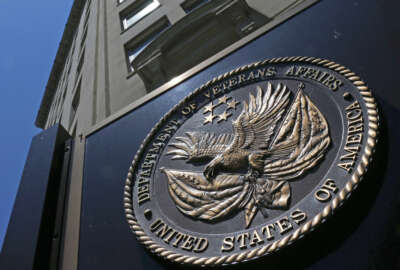Six pressing predictions for crisis communication in 2015
Agencies should consider these six steps to help keep their employees safe and informed during emergencies, says Aviv Siegel, the CTO and co-founder of AtHoc, in a...
Commentary by Aviv Siegel CTO and co-founder, AtHoc 
- More and more federal organizations will turn to advanced crisis communication solutions.They simply can’t afford to manage emergency communications on their own anymore. The primary reasons include:
- Political and social environments are significantly less stable and predictable, causing more life-threatening events;
- Event consequences are more substantial than ever, including the potential for extensive collateral damage;
- Modern organizations are geographically dispersed, making personnel protection more challenging than ever;
- More and more federal employees and federal contract workers travel to insecure locations;
- Workplace violence has increased substantially;
- Increased awareness of the personnel-safety consequences of not being prepared and/or not responding appropriately.
- Cutting-edge new platforms will be unified.The best-of-breed will integrate fluidly with legacy systems, preserving existing investment and, most importantly, ensuring seamless crisis response at the federal level. Specifically, these solutions will readily assimilate both historical systems and the latest and greatest technology, including: on-the-go devices (mobile phone, tablet, wearable, laptop), desktops, unified communication, voice-over IP, two-way radios, sirens, public announcement systems, video cameras, access controls, strobes, digital display, LED display boards, sensors, fire panels, Integrated Public Alert and Warning System (IPAWS) and social network notification. Through sophisticated IP integration modules, these advanced platforms will bring all elements together so — if there’s an emergency — federal organizations and the affected populace will know.
- To cut response times and save lives, advanced mobile capabilities will be a must.Emergencies don’t happen only when you’re at your desk. With the best crisis communication platforms, federal personnel can use their mobile phones or tablets to:
- Speed response to the crisis — no matter where they are — with geo-tagged emergency alerts;
- Heighten event awareness among teams via rich media: video, images, text and maps;
- Get specific, actionable information — e.g., evacuation routes — via mobile alerts;
- Initiate geo-located duress alerts. They can even leverage rich media to fully describe emergencies.
These sophisticated systems will let emergency operators and first responders communicate and collaborate with their teams and the affected population. Specifically, these solutions:
- Send geo-tagged alerts to security and first responder teams: anywhere, in a single click;
- Launch alerts — from any location — to all personnel or to specific, geo-targeted users or devices;
- Submit a quick field report to the operations center or management team;
- Forward detailed, rich incident information directly to first responders.
- State-of-the-art cybersecurity and privacy protection will be a given. To ensure cutting-edge network security and privacy protection, the most promising platforms will offer a variety of architecture options: on-premise, cloud-only or a hybrid configuration. This selection helps ensure federal organizations are always in control of their own data — a huge security advantage. Best-of-breed will qualify for the Support Anti-Terrorism by Fostering Effective Technology (SAFETY) Act designation by the Department of Homeland Security (DHS) — and be recognized as a Qualified Anti-Terrorism Technology (QATT).
- Personnel accountability (PA) will be paramount.According to Forbes magazine, up to 45 percent of all employees work remotely or are completely virtual; Gartner Research puts the number at 60 percent. So, personnel accountability of a distributed workforce is more important than ever. Leading crisis communication solutions will safeguard federal personnel by ensuring that geographically dispersed employees — both staff and contract — are continuously accounted for and always ready to perform assigned duties. They’ll also let field personnel communicate directly with supervisors and HQ, so their location and status is always known. Finally, they’ll accelerate operational recovery by sending status requests to impacted personnel.
- Crisis communication between organizations will improve dramatically. It’s a disturbing fact: most commercial enterprises and federal agencies operate independently. They can’t share information in real time, even during crises, and they don’t have the tools to collectively assess situations and provide coordinated responses. Connected crisis communication platforms integrate an organization’s crisis communication solution with the community, letting it easily share information with others. The result: a new level of protection for life and property. Truly connected solutions will feature these capabilities:
- Communicate with all other emergency management entities;
- In a critical event, easily see and manage connected organizations. Communicate and share essential information to prepare, respond and restore;
- All-organization integration that empowers the connected community to manage emergencies comprehensively.
No one can truly predict what tomorrow will bring — much less next year. But armed with a new level of crisis communication capability, federal entities can at least be prepared for it.
Aviv Siegel is CTO and co-founder of AtHoc, Inc., which specializes in network-centric, interactive crisis communication solutions.
Copyright © 2024 Federal News Network. All rights reserved. This website is not intended for users located within the European Economic Area.





